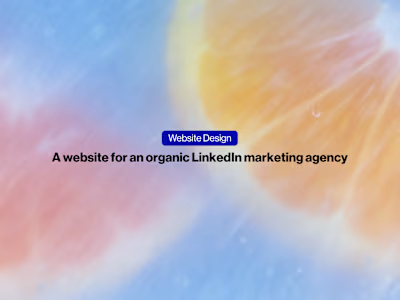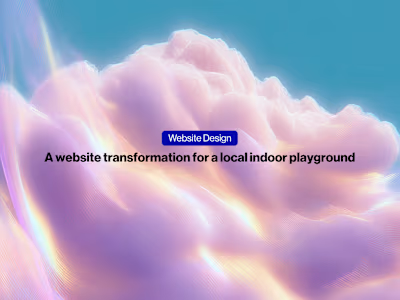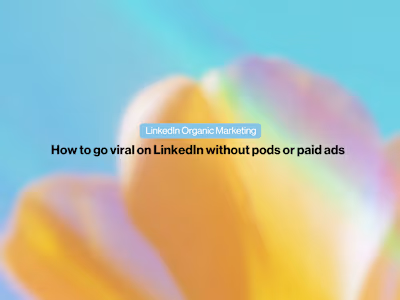Building a brand new blog to 100,000 visits in 6 months
The content strategy that resulted in 92K unique visits in 6 months for a brand new website
I transformed a controversial brand’s online reputation by creating epic, share-worthy content that grew their blog from zero to 92,000 monthly visitors in 6 months, all through organic search—proving that strategic content marketing can overcome even the worst Google search results.
Challenge
You may have heard of CUTCO — the company that sells high-quality knives primarily through direct sales. What you may not know is that CUTCO has a sister company, called Vector Marketing, which pays college students to sell their products.
Not only is it a flexible way to earn extra cash while in school, but the position also teaches students “skills for life,” or rather transferable skills for their next professional position.
Unfortunately, and wrongly so, Vector Marketing has gotten a bad rap for being a scam thanks to Internet misinformation, which proliferated the front page of Google for negative, high-volume, brand keywords.
CUTCO’s digital strategy manager hired me to spearhead a high-caliber blog and train his team on how to manage and grow it once I was gone.
The content had to resonate with its target audience — motivated young people, who were hungry to learn, and their parents, who were skeptical of the company.
His ultimate goal was to “prove to the external market (those forming an opinion on us) that we AREN’T all the nasty things you read about us online, but to do this with USEFUL content, NOT brand-centric, ‘look how great we are.’”
Results
Within six months, I grew the blog from nothing to 92,000+ unique visits with no paid advertising, just really phenomenal, SEO-optimized content and custom distribution strategies.
My SEO/content marketing strategy increased the number of organic keywords ranking in Google from 0 to 2,540 in nine months and was responsible for the 52 percent increase in organic traffic during that time.
Flash forward to today, and my content has proven evergreen, as it’s still ranking and driving a substantial amount of organic traffic to the site.
[one of my top posts](https://www.thevectorimpact.com/what-should-i-do-with-my-life/) I wrote for The Vector Impact over the last six months. Originally published: October 25, 2018.*](https://media.contra.com/image/upload/fl_progressive/q_auto:best/f9lmnsytvp0rsn3kf143.webp)
*This is a screenshot of my Ahrefs dashboard, which shows key metrics of[ ](https://www.thevectorimpact.com/what-should-i-do-with-my-life/)[one of my top posts](https://www.thevectorimpact.com/what-should-i-do-with-my-life/) I wrote for The Vector Impact over the last six months. Originally published: October 25, 2018.*
Strategy
My client wanted to grow this brand new site’s organic search traffic fast and compete in SERPs with already established blogs in competitive niches (eg: career advice, life hacks and money tips).
In order to do this, I knew we had to focus on creating truly original content that was so good that people couldn’t not share or link to it after having read it.
Not only did the copy have to be clear, cohesive and edutaining, but the images also had to be original, engaging and shareworthy by themselves, and the ideas had to be worthy enough to be covered. The page (reading) experience had to be enjoyable on all devices.
Process
Create high-caliber content.
There were two types of content that needed to be developed in order to launch the site.
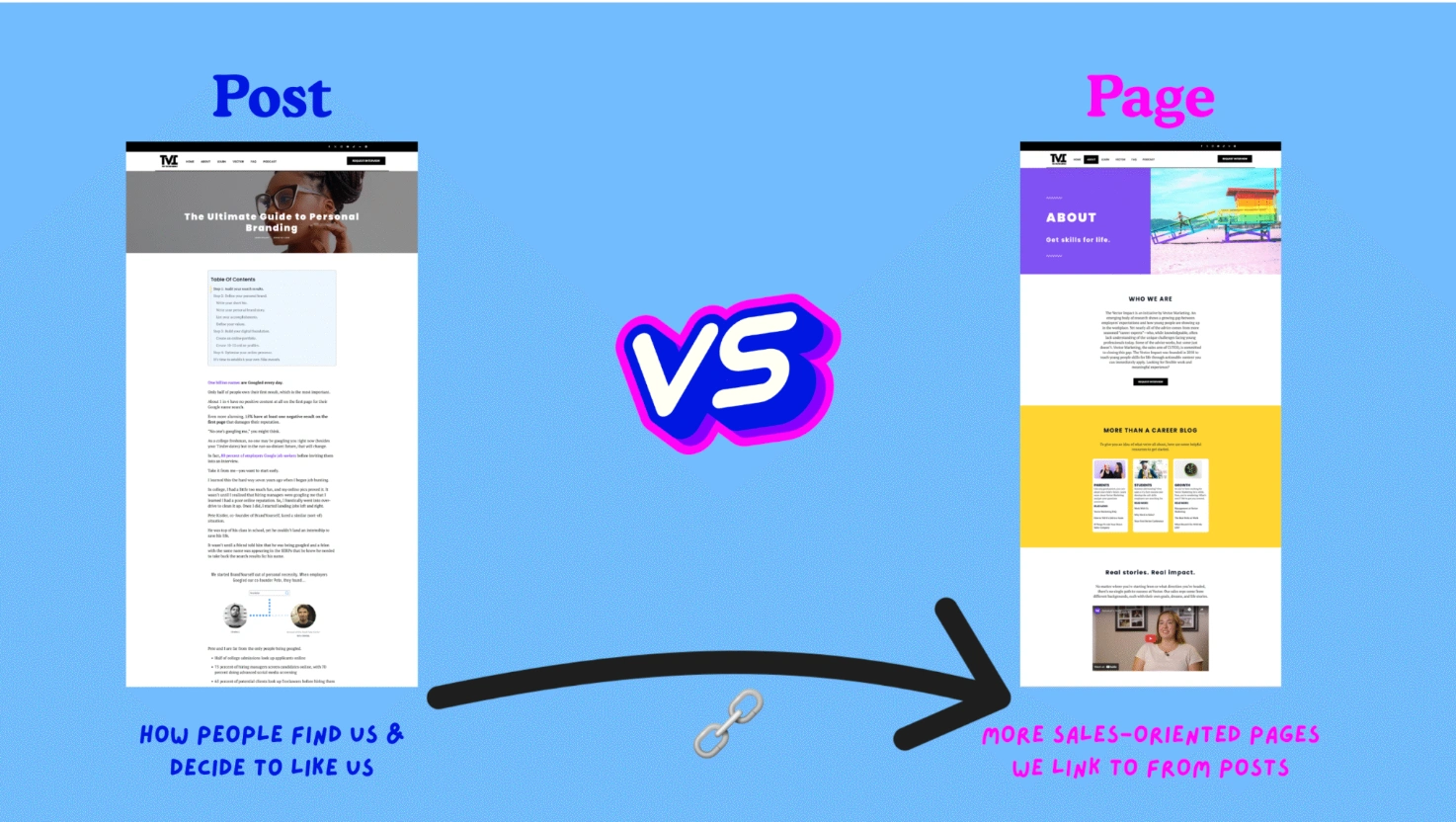
1. Static marketing pages
Static marketing pages are the pages on your website that rarely change. It’s the brand-centric content that teaches people more about your company and/or offerings.
My hypothesis was that if our original content was good enough, visitors would naturally want to learn more about the website and the company/people behind it.
While the client came to me with a list of static pages he had envisioned for the site, I interviewed him and key internal stakeholders to further distill the information and make sure that it was organized in the easiest way possible to digest.
Ultimately, we decided to link to them on the “Start Here” page, prominently linked to in the top menu as well as in the footer.
Each section on the “Start Here” page serves a purpose.
The page begins with the blog’s mission statement that succinctly explains what the blog is about.
Then, we lead into why the blog is needed — what’s the problem we’re trying to solve — and we wanted to be transparent about who owned the website.
We end with a nonchalant call-to-action (CTA), in Vector’s case, requesting an interview to become a CUTCO sales rep.
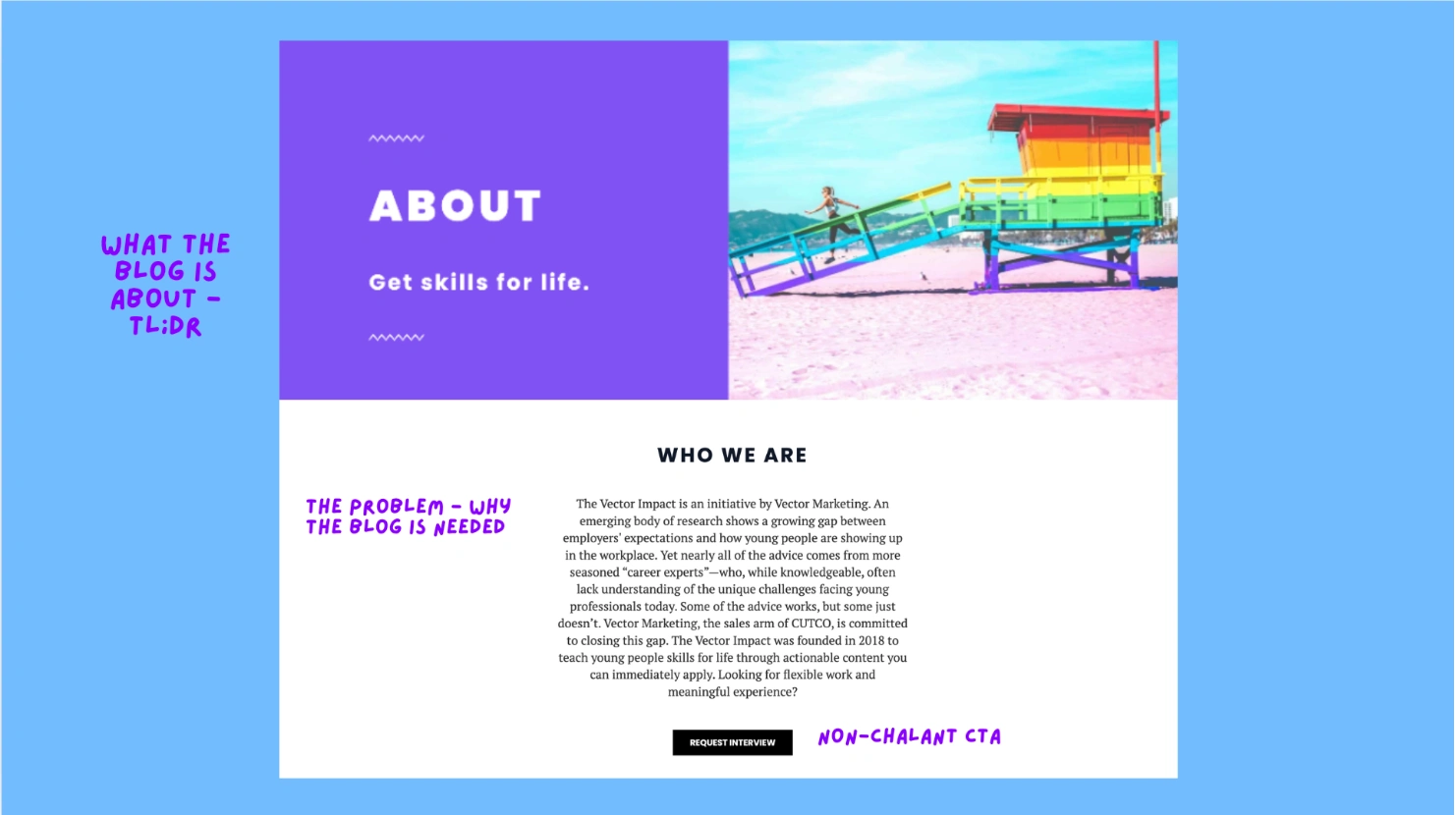
In the next section, we link to the most important static, marketing pages. Notice how we grouped each column, with a focus on audience type, so visitors could quickly get to the content that’s most relevant to them.
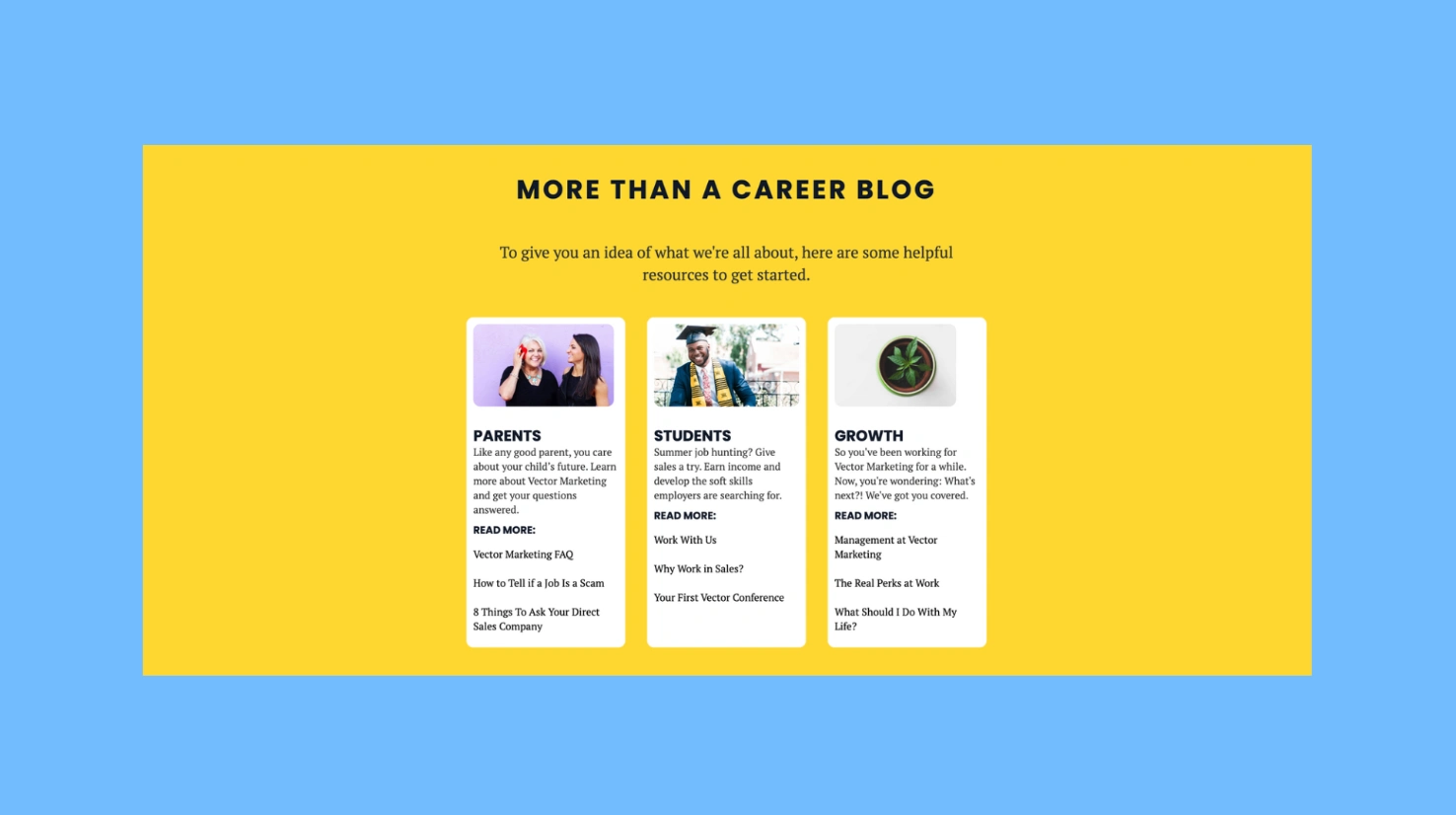
Social proof is really important if you want people to trust you online, so we included testimonials from actual student reps next.
Another form of social proof is showcasing logos for awards you’ve received and places you’ve been published.
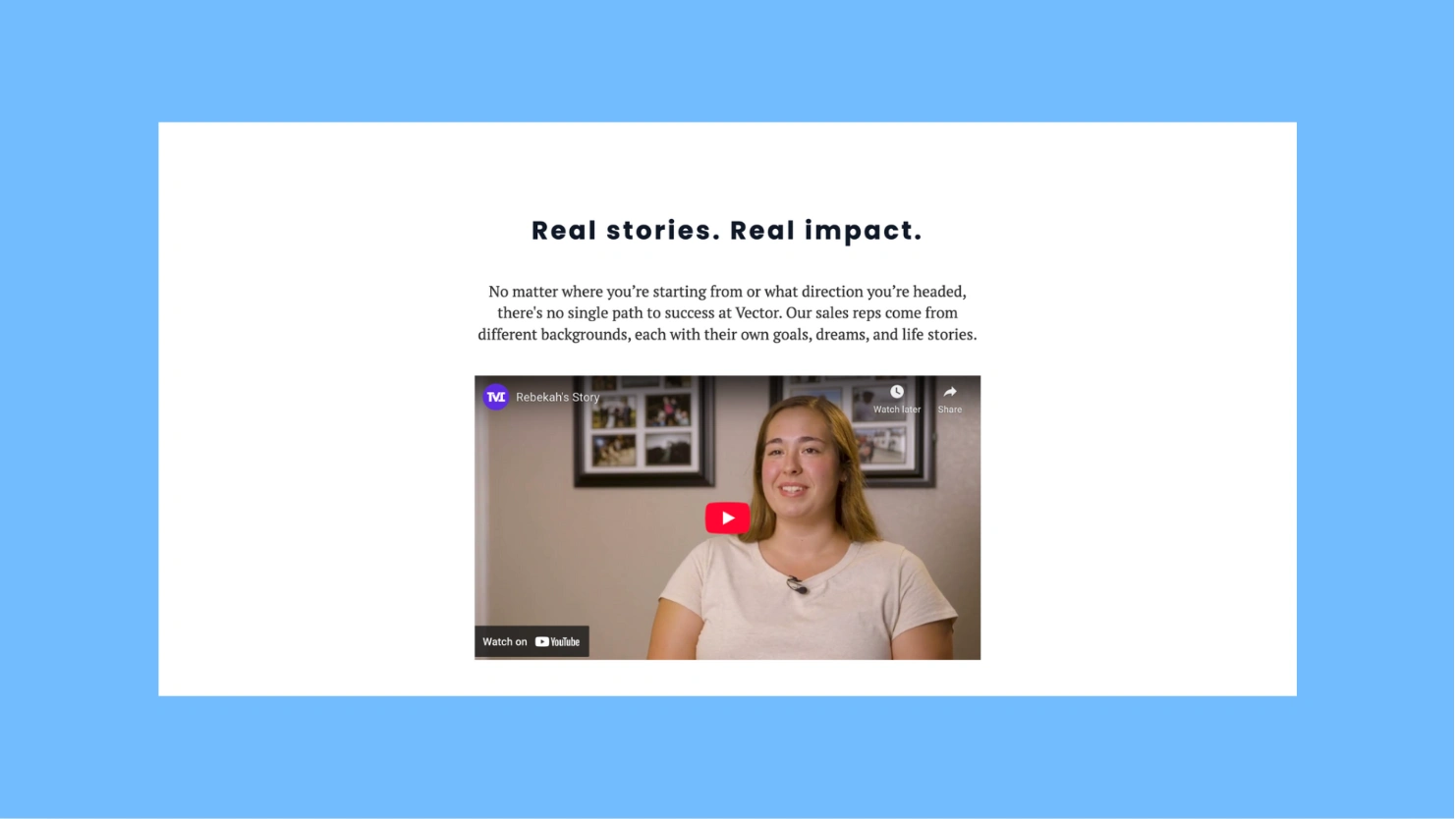
Last but not least, we made it super easy to get in touch with us by not only offering an email address but also by embedding a contact form at the bottom of the page.
2. Original blog posts
After creating all of the static pages, I moved onto the “fun” content — the epic, original blog posts that would drive readers to click on the “Start Here” page to learn more about the company because the content was so good. This is the content that would make visitors want to give us a chance.
We didn’t have concrete categories at this point, but we knew the themes or topics centered around: making money and saving money, life hacks, personal branding and career advice.
The client had a short list of content requests to start, mainly around branding yourself on social media, but aside from that, I came up with all of the post ideas myself.
I wrote three to four epic posts per month. (See some of my posts at the bottom of this case study.)
Design the website.
Prior to hiring me, my client had hired a web development agency, which had built a barebones, visually unappealing (to say the very least) WordPress website that was NOT responsive and didn’t adhere to any UX best practices.
It looked similar to this other website owned by Vector >> getskillsforlife.com. See the screenshot below.
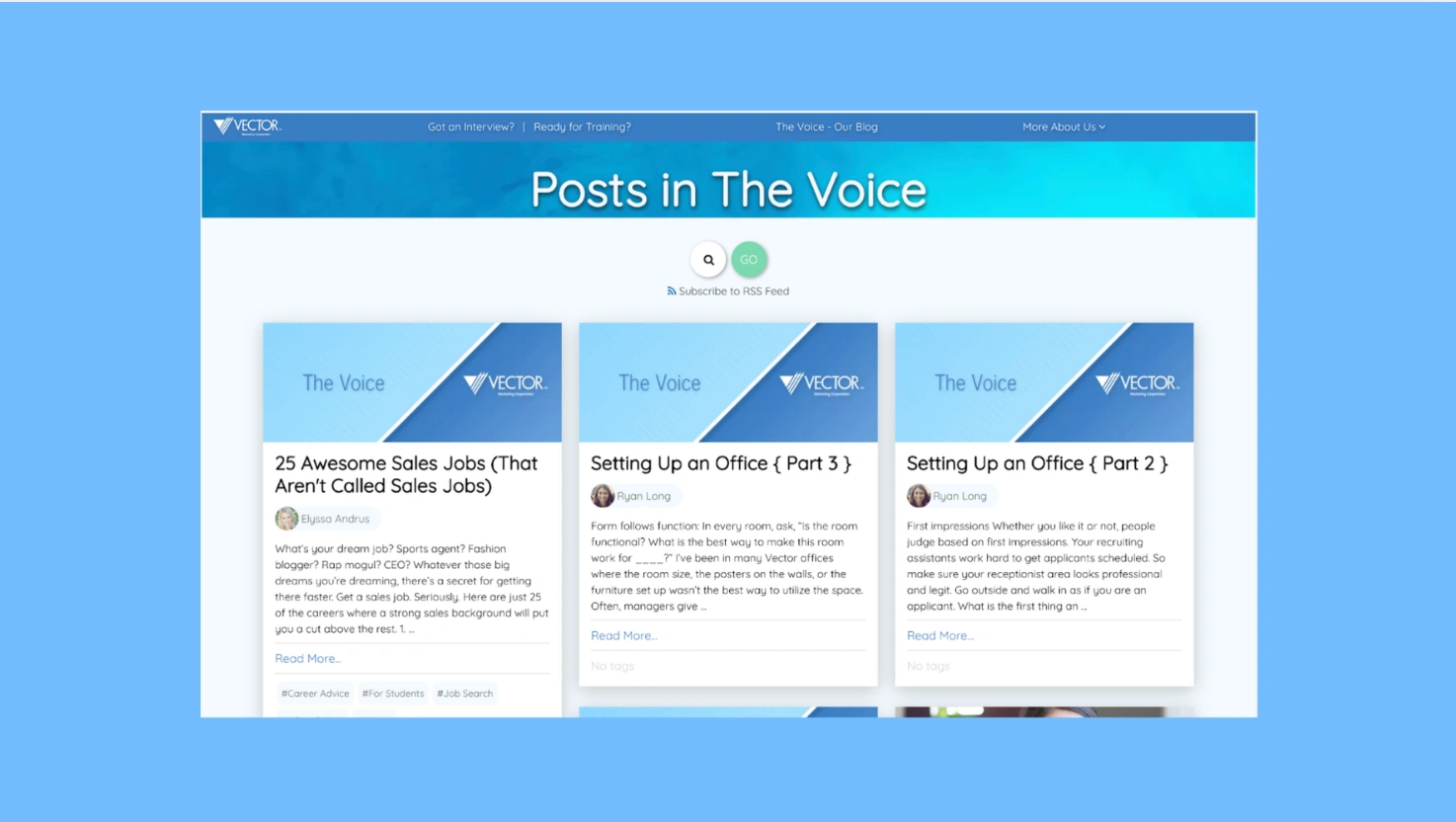
Not only was it visually unappealing but it was also overwhelming — there were too many items in the overly long dropdown menu, and the labels weren’t helpful for letting people know what they could expect if they clicked on it.
I knew the site wouldn’t be a success without a better, more trustworthy-looking design. It was non-negotiable, especially because this company was associated with “scams” — the website obviously couldn’t look like one too.
Fun Facts: 48% of people cited a website’s design as the number one factor in deciding the credibility of a business, and 94% of people cited web design as the reason they mistrusted or rejected a website.
After much convincing, my client finally agreed to let me take over, and I started from scratch.
I helped the client choose a WordPress hosting provider. He opted for Kinsta.
The original WordPress site was custom-coded, which defeated the entire purpose of using a CMS like WordPress in the first place (so it’s easy for non-technical people to update and use without the help of a developer).
I recommended the Garage WordPress theme instead.
I liked this theme because it had color-coded categories, an easy-to-use drag-and-drop page editor and a modern design that would appeal to our target audience.
It’s also responsive, which means it looks good across devices.
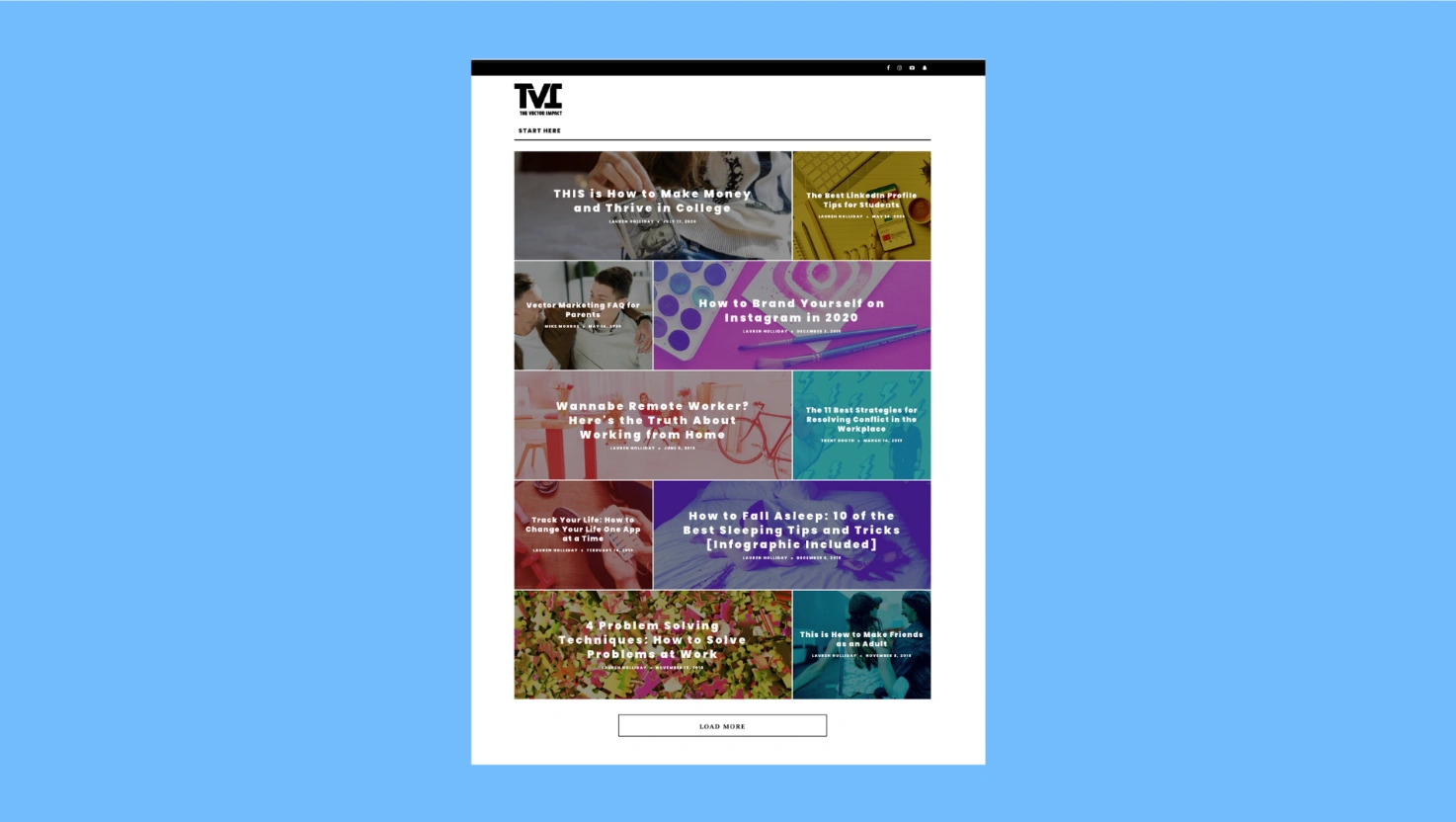
In one weekend, I finished the initial blog design.
As you can see above, to start, we kept it simple, and the homepage was just a masonry grid style feed, with infinite scrolling.
I made sure each post, since they were long, featured a table of contents at the top of the post. I would’ve liked the table of contents to naturally scroll alongside the post, as people read.
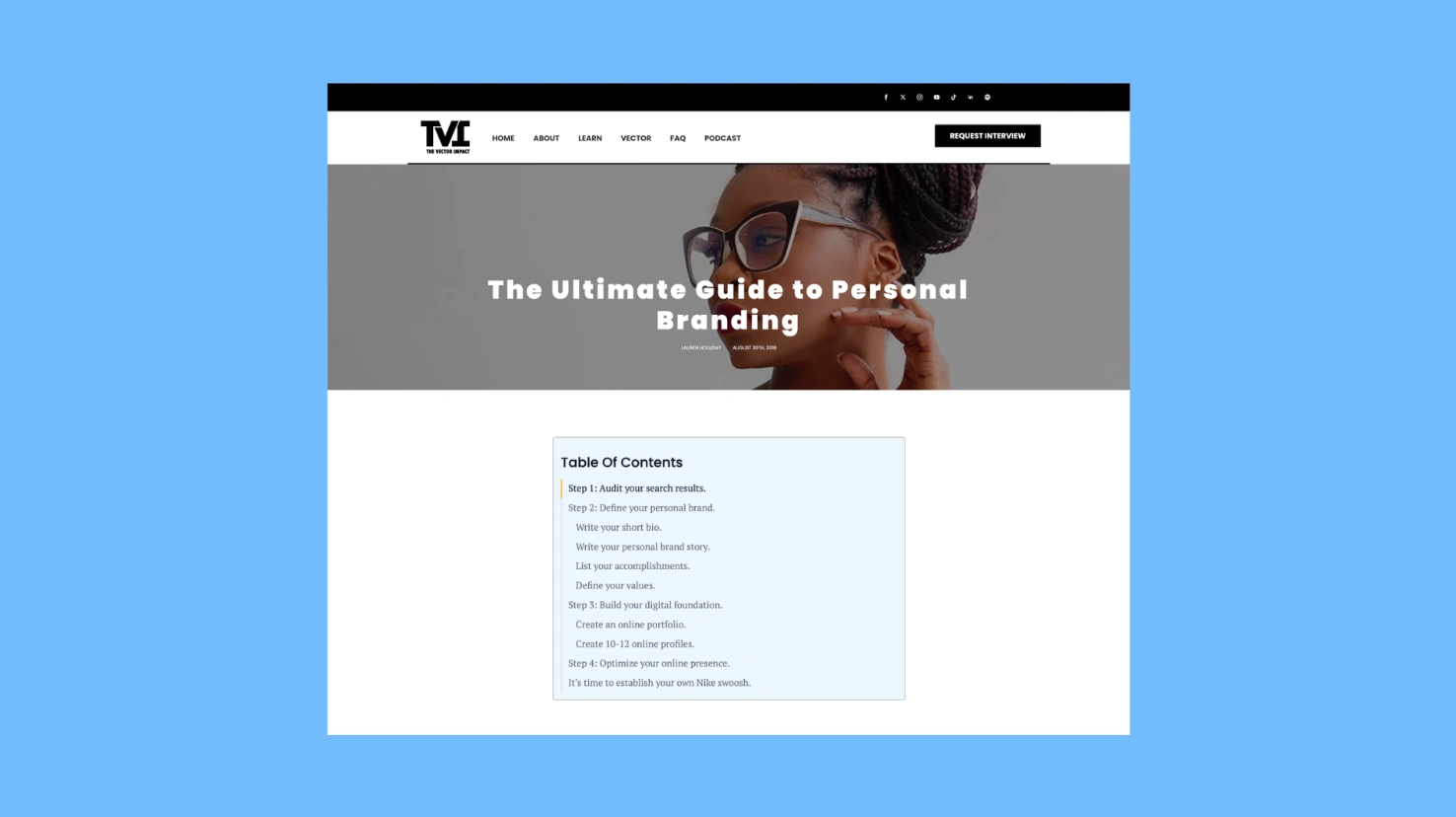
As you can see above, each post features a large hero image with a title overlay, writer byline and post date, followed by the clickable table of contents.
I worked with their designer to make custom images like the one below for each post as well.
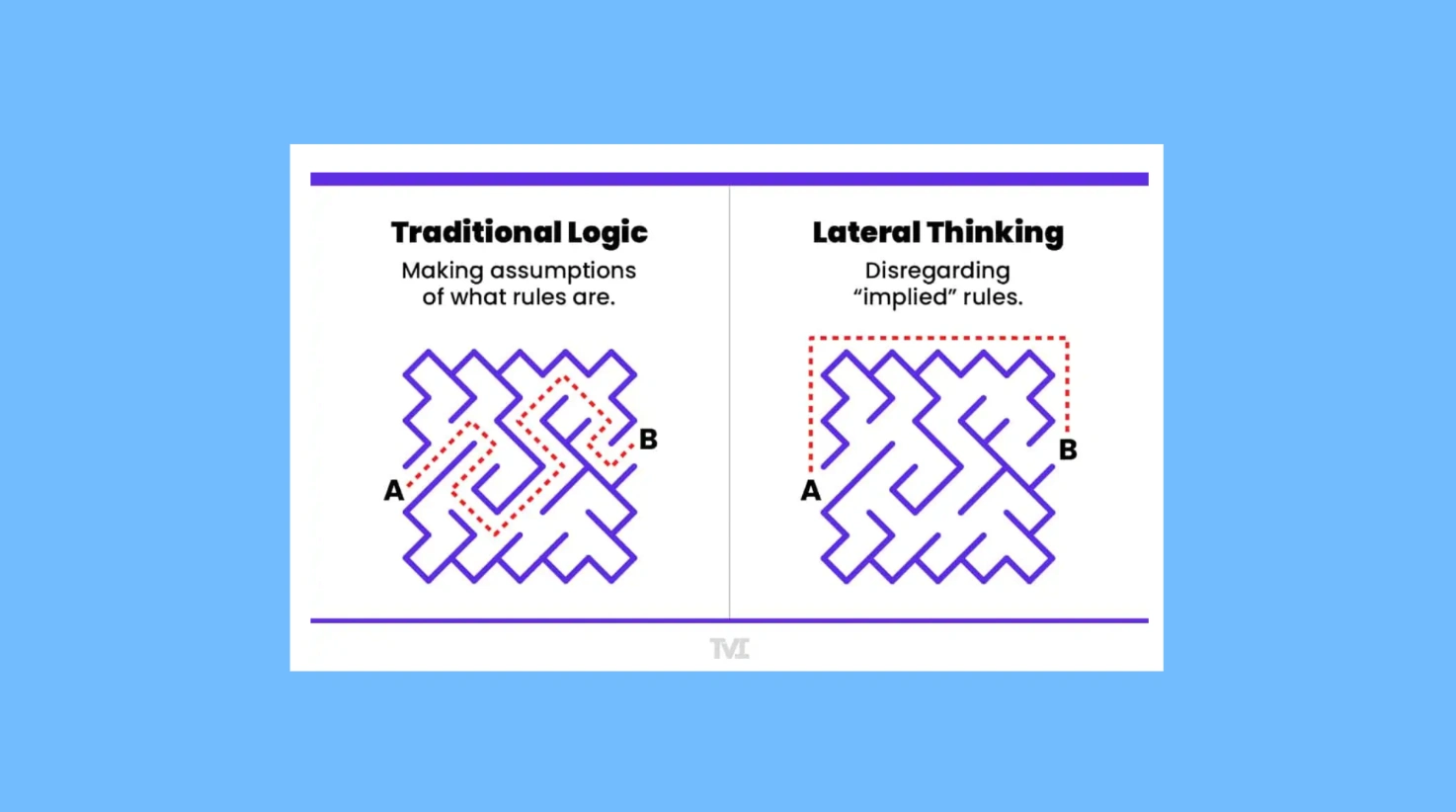
Train designer to become editor-in-chief.
Throughout the entire process, I was training a designer to become the editor-in-chief of the blog, which would have numerous freelance writers someday.
I showed her how to edit content in G-Docs and make effective comments, what makes great content great, blog post imagery design best practices, how to conduct keyword research, and write meta descriptions, good titles and headlines.
Today, the blog is still flourishing and without any help from me. I’m proud to say, the last time I checked Google Analytics, the average dwell time of my posts was between five and six minutes, and many, much higher than that.
My content
The No. 1 page for organic traffic on the site
SEO, evergreen, competitive analysis inspired
#skillsforlife #purpose #millennials #lifehacks
Top page for organic traffic
SEO, evergreen, shareworthy
#personalbranding #skillsforlife
Top page for organic traffic
SEO, evergreen, shareworthy
#careeradvice
Top page for organic traffic
Shareworthy
#jobsearch
Top page for organic traffic
SEO, evergreen
#skillsforlife #softskills
SEO, evergreen
#motivation #life #purpose #millennials #skillsforlife
Top page for organic traffic
SEO, shareworthy, niche
Personal favorite
#lifestyle #quantifiedself
Popular post
SEO, shareworthy
#resource
Top page for organic traffic
SEO, shareworthy
#resource #personalbranding #inspiration
Top page for organic traffic
Client requested topic
#linkedin #personalbranding #skillsforlife
Top page for organic traffic
SEO
#jobsearch #interviews
SEO, timely
#health #mentalhealth
Client requested topic
SEO
#money #skillsforlife
Provocative, shareworthy
#college #oped
#personalbranding #instagram
Relatable problem with good information on how to solve it
#careeradvice
#jobsearch
#jobsearch
Client requested topic
SEO
#money #skillsforlife #college
Client requested topic
SEO
#money #skillsforlife #college
#skillsforlife
#millennials #skillsforlife #careeradvice #lifeadvice
#millennials #lifeadvice
SEO
#friends #life #adulting
SEO
#life #adulting
Client requested topic
SEO
#money #skillsforlife
Client requested topic
SEO
#money #skillsforlife
Client requested topic
SEO
#money #skillsforlife
Client requested topic
SEO
#money #skillsforlife
Client requested topic
SEO
#money #skillsforlife
Client requested topic
#personalbranding #facebook
Like this project
Posted Dec 12, 2024
The content strategy for a brand new blog that resulted in 92K unique visits in 6 months -- all from organic search.
Likes
1
Views
30





